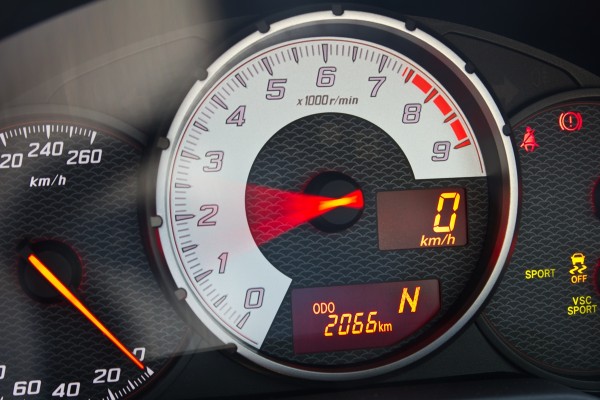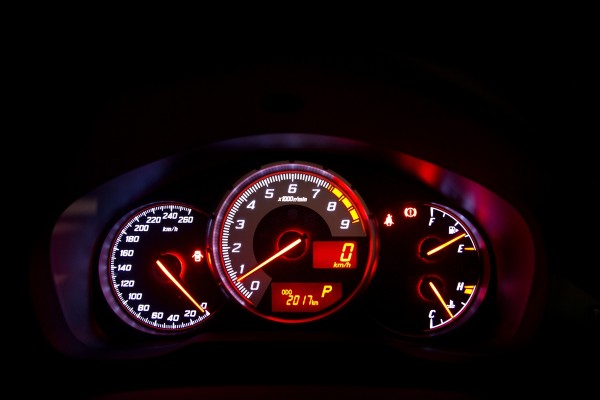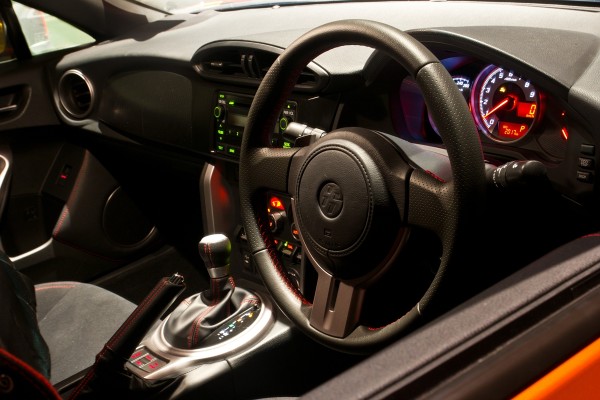When word got out that Toyota would revive the legendary 86, the motoring world was abuzz with anticipation. As journalists around the world got behind the wheel of the new 86, they all proclaimed it to be worthy of its name, that it was one of the best handling cars in the world, with a purity unmatched by any other car. So when ‘(00) allowed me some drive time behind the 86, you can imagine I was pretty stoked.
Twelve hours – that’s how much time I had with the 86 before I had to return the test unit to the kind folks at Toyota. Since the clock began to tick down from 3AM, I decided to make do with less sleep and instead, spend time in the car to see how it stacked up in real world, real world scenarios. But while I anticipated this to be a fairly easy article to write, let’s just say it turned out to be a little more difficult than I’d imagined it to be.
From the start, Toyota has made it very clear that the 86 is not a performance oriented car; promising instead a car with lower speeds capable of delivering more joy, driven by feel and intuition instead of science and logic. To achieve this, the 86 follows a certain formula: lightweight (1280kg), low-slung, rear-wheel drive, with just enough power (200PS/205Nm from its boxer-four engine). Driving position is low; lower than most of the cars I’ve driven this year, with the seats gripping the driver snugly. The 86 also wears narrow profile rubbers – 215/45 R17s, as insisted by Toyota’s chief engineer on the GT86. Speaking of tyres, Toyota is unashamed to admit that the seats in the rear were made for folding to accommodate four spare tyres.
Fire up the engine (via Start/Stop button) and the sound you get is uncharacteristic of a boxer engine; toned down, and if I have to be honest, rather underwhelming. As I rode shotgun on the journey up Genting Highlands, one thing was immediately apparent to me – this car could do well with a bit more power. Despite the numbers on the speedo that climbed quickly, power delivery still felt flat. The drive downhill (one that I undertook) fared better; gravity having played a part with bringing the car up to speed, and where the car lacked in power, it made up for in pin-point accuracy and chassis exploitability.
Even in the dry, there’s not a whole lot of grip. I left Stability Control turned on for my trek downhill, but at almost every corner, you could feel the rear just wanting to swing out. Body roll is kept to a minimum, thanks in part to its low center of gravity, and it is apparent that the 86 is beautifully balanced. You’d imagine that the 86 with its electromechanical steering would communicate less freely with the driver, but you’d be wrong – it’s well-weighted, provides plenty of feedback, and I dare say is slightly better than even the Porsche 991. It’s sharp too; the nose darting into whichever direction you steer.
Getting the most from the boxer four pot takes commitment – you really need to wring the engine to extract every dollop of performance. In automatic guise, Zerotohundred takes 8.2 seconds (manual takes 7.6 seconds), but in truth, feels lethargic and slower than the numbers suggest. We’re not saying the car is slow of course; just less manic than what we’re used to. In our short video, we even manage to hit a breezy 190+km/h (from a sub 230km/h top speed). It was just unfortunate that the press car was one with an auto-box; it was less engaging and sluggish which muddied our first impression of the car.
Inside the Toyota 86, the driver is seated very low towards the ground. This helps to lower the centre of gravity and even improve dynamics and I’ve no doubt that some of our readers would appreciate them. However, I’m a fairly big (and heavy!) guy, certainly not the most nimble, so I’ve got to admit I found it challenging getting both in and out of the car. In fact, I was recovering from a pulled back muscle and spending several hours in the 86 really aggravated it. Thankfully, the seats were snug and comfortable, albeit lean enough to transfer plenty of judders up my spine.
But really, that wasn’t my the cause of my disappointment; this remained entirely with cabin of the 86 which remained boring, and almost spartan. The radio for example, looked to be almost the same as the one in my 2002 Toyota Altis – dated, with green/black backlit display; I really expected something with colour here. And the materials felt cheap too, especially when compared with continental cars. On the plus side, the interior was designed to be simplistic, button placement was intuitive, and it doesn’t take very long to get used to. Toyota clearly tried to spruce up the interior with dashed of red stitching and highlights – good effort, but really not good enough.
On my way to return the 86 to Toyota, I racked my sleep deprived brain to come up with a conclusion. The Toyota 86 was conceptualized to be a budget sports car that would be accessible for many; and the truth is that Toyota has delivered exactly what they’ve promised – a simple, no frills, pure sports car, un-corrupted by the dark powers of forced induction. There’s an innate finesse to the car with good balance and poise, sharp yet fluid, and gifted with an ability to deliver plenty of fun – best exploited when out on track, or on a good set of twisty roads. Sure, the interior is a bit unenthusiastic, but that’s something most will be able to live with. The most significant letdown then is its price; Toyota is asking close to RM250k for the 86 – more money than either the Golf GTI or Megane RS250, both of which are equally competent cars that deliver thrills in different departments. Viewed as an overall package, this car is, for me, one of the biggest disappointments of this year, and that is a real pity, especially given the car’s breadth of talents.




























